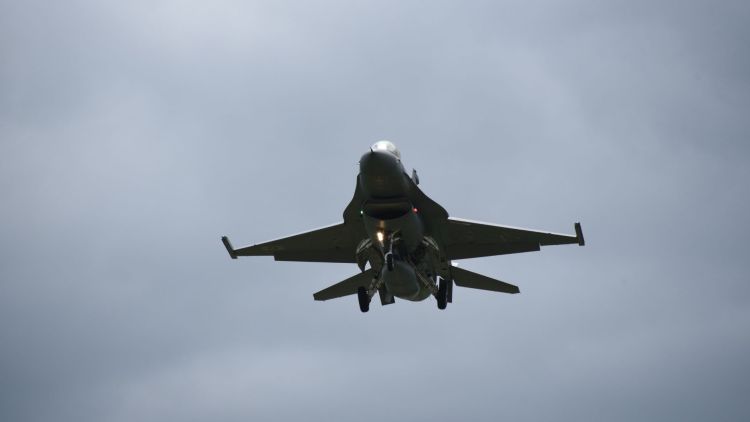The F-16 has been a workhorse for the US Air Force and many of its allies for decades. As one of the most versatile and widely used fighter jets in the world, it has seen action in countless conflicts and proven its value time and time again.
But let’s face it—technology evolves, and older aircraft like the F-16 can start to look like yesterday’s news when up against modern threats.
That’s where Northrop Grumman’s AN/ALQ-257 Integrated Viper Electronic Warfare Suite (IVEWS) steps in, giving this legacy fighter a new lease on life.
The IVEWS isn’t just another upgrade, according to reports—it’s a lifeline.
By equipping the F-16 with next-gen electronic warfare capabilities, it promises to extend the aircraft’s relevance well into the 2040s.
In a world where fifth-generation fighters dominate headlines, this upgrade proves that you don’t always need to buy new ones to stay competitive.
So, how exactly does this new tech breathe fresh life into the F-16? Let’s dive into why this upgrade is not only smart but also a cost-effective, cutting-edge capability.
A Cost-Effective Modernization Strategy
Let’s talk money. Retrofitting older jets like the F-16 makes a lot of sense when you consider the price tag of replacing an entire fleet with something like the F-35.
The F-16 has been a workhorse for the US Air Force and many of its allies for decades. As one of the most versatile and widely used fighter jets in the world, it has seen action in countless conflicts and proven its value time and time again.
But let’s face it—technology evolves, and older aircraft like the F-16 can start to look like yesterday’s news when up against modern threats.
That’s where Northrop Grumman’s AN/ALQ-257 Integrated Viper Electronic Warfare Suite (IVEWS) steps in, giving this legacy fighter a new lease on life.
The IVEWS isn’t just another upgrade, according to reports—it’s a lifeline.
By equipping the F-16 with next-gen electronic warfare capabilities, it promises to extend the aircraft’s relevance well into the 2040s.
In a world where fifth-generation fighters dominate headlines, this upgrade proves that you don’t always need to buy new ones to stay competitive.
So, how exactly does this new tech breathe fresh life into the F-16? Let’s dive into why this upgrade is not only smart but also a cost-effective, cutting-edge capability.
A Cost-Effective Modernization Strategy
Let’s talk money. Retrofitting older jets like the F-16 makes a lot of sense when you consider the price tag of replacing an entire fleet with something like the F-35.
The F-16 may be a little older, but with the right tech upgrades, it can still pack a punch—and for a fraction of the cost.
The AN/ALQ-257 IVEWS is a perfect example of how modernizing existing platforms can save big bucks while keeping aircraft combat-ready.
For the Air Force, this isn’t just about pinching pennies—it’s about getting the most out of an already well-established platform.
With the IVEWS, the F-16 isn’t just a relic of the past—it’s a cost-effective solution that can meet modern-day challenges without requiring an entirely new fleet of aircraft.
Plus, for international operators, it’s an attractive option to modernize their air forces without breaking the bank.
AN/ALQ-257 IVEWS (Northrop Grumman)
Global Interoperability and Defense Strategy
The F-16 isn’t just America’s jet—it’s the fighter of choice for air forces around the world. From Turkey to Taiwan, dozens of countries rely on the F-16 to defend their skies.
Upgrading these jets with the IVEWS does more than just give them a technological boost—it strengthens global defense ties by ensuring these jets can operate alongside US forces.
In joint operations, it’s crucial that everyone’s equipment works together seamlessly, and that’s where the IVEWS shines.
It enhances the F-16’s ability to integrate with other systems, making it a key player in multinational defense strategies.
Turkey, for instance, has already signed up to equip its new Block 70 F-16s with the IVEWS, a clear sign of its confidence in this technology.
Countering Modern Threats: Asymmetric Warfare and Beyond
Modern warfare isn’t about duking it out with massive fleets anymore—it’s more complex, especially with the rise of asymmetric threats.
Today’s enemies are mobile, fast, and often hard to detect.
And this is where the IVEWS really earns its stripes.
The system is built to counter the most advanced threats on the battlefield, including sophisticated radar systems and missiles that can lock onto aircraft from unexpected angles.
It’s not just about detecting these threats, though—the IVEWS is also designed to neutralize them, keeping pilots safe in highly contested environments.
Picture this: an F-16 flies over hostile territory, unaware of a mobile anti-aircraft radar that just powered up below.
In the past, this could’ve been a fatal scenario, but with the IVEWS, the jet can detect, identify, and counter the threat before it even becomes a real danger.
This kind of capability is critical for surviving in today’s high-stakes combat zones.
F-16 Falcon (DVIDS)
Maximizing Operational Flexibility
The IVEWS isn’t just about adding more tech to the F-16—it’s about making the aircraft more flexible.
One of the biggest advantages of this system is that it’s internal, meaning it frees up valuable external space on the jet.
Without the need for bulky jamming pods on the centerline, pilots now have more options for carrying extra fuel or weapons, giving them greater flexibility in combat.
And let’s not forget the IVEWS’ ability to play nice with the F-16’s other systems, like the new AN/APG-83 radar.
This ensures the jet can handle multiple tasks at once—conducting radar operations while simultaneously jamming enemy signals.
In other words, it’s multitasking at its finest, giving the F-16 even more ways to stay relevant on the modern battlefield.
Ensuring Future Relevance
The F-16 has had an impressive run, but no aircraft can stay relevant forever without some serious upgrades.
The IVEWS is a game-changer, keeping the F-16 competitive in a world that’s increasingly dominated by fifth-generation fighters.
With the ability to counter modern threats and operate in contested electromagnetic environments, this suite is designed to keep the F-16 operational into the 2040s.
And this isn’t just about American jets—the IVEWS is catching the attention of air forces around the world.
As countries look to modernize their fleets, the F-16 equipped with IVEWS is an appealing option.
It’s fast, reliable, and now, with the IVEWS, it’s also future-proof.
Final Thoughts
In a world where tech is always evolving, the AN/ALQ-257 IVEWS is a crucial upgrade for the F-16. It’s a smart, cost-effective way to keep this iconic jet flying strong, serving the US and its allies well into the future.
The IVEWS boosts the F-16’s ability to handle modern threats, frees up space for extra gear, and keeps it combat-ready in tougher environments. It’s all about making sure this fighter stays relevant well into the 2040s.
So, while the newer jets may steal the spotlight, the F-16 isn’t done yet. With the IVEWS on board, this classic fighter is proving that sometimes the best way forward is to bring a bit of the past with you.
—
Disclaimer: SOFREP utilizes AI for image generation and article research. Occasionally, it’s like handing a chimpanzee the keys to your liquor cabinet. It’s not always perfect and if a mistake is made, we own up to it full stop. In a world where information comes at us in tidal waves, it is an important tool that helps us sift through the brass for live rounds.



